A Day in the Field – Crops, Cows & Carbon

Are you ready to enhance your farming practices with innovative solutions for feed and soil health? Join us on July 5th in Coalhurst, Alberta, for an engaging and informative field day filled with guest speakers, practical advice and plenty of networking opportunities.
EP 77 – Healthy Food, Healthy Environment – SoR Part 9
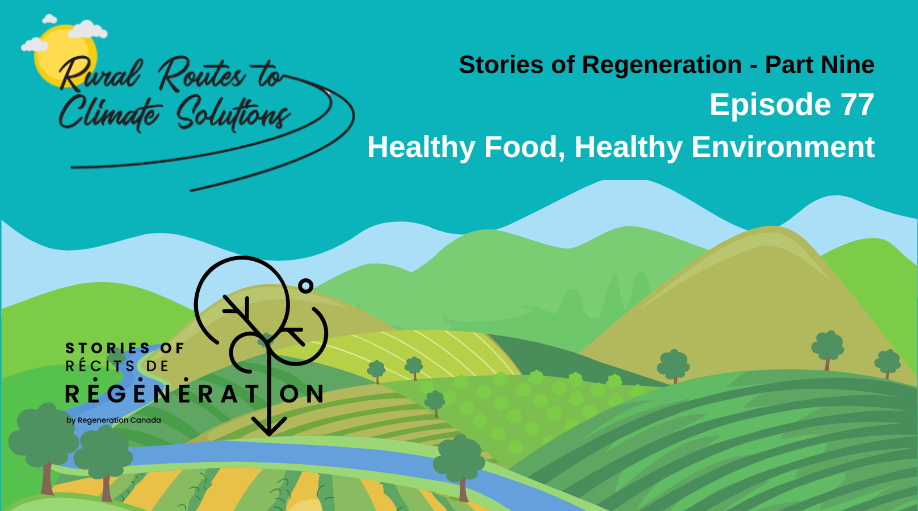
Podcast: Play in new window | Download
Subscribe: RSS
Facing his daughter’s health issues, rancher Craig Cameron and his family turned to regenerative farming to grow the healthiest food possible for her. Craig, alongside his father-in-law Peter DenOudsten, shifted their traditional beef farm to a regenerative model. They now grow over 10 types of grass and clover, use less fertilizer, and produce some of the healthiest, most nutritious beef you can find.
EP 69 Loyal to the Soil – SoR Part Two
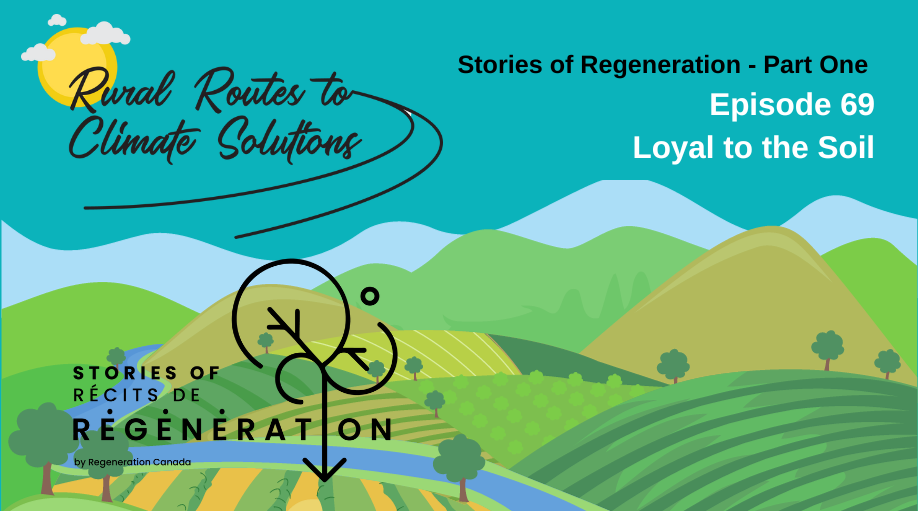
Podcast: Play in new window | Download
Subscribe: RSS
During the growing season of 2023, Rural Routes to Climate Solutions teamed up with Regeneration Canada to connect with agricultural producers across Canada who are tackling the pressing social and environmental crises through the adoption of regenerative agriculture.
One such farm is Axten Farms, situated in Minton, Saskatchewan. With a steadfast commitment to growing healthy grains, Axten Farms takes a regenerative approach focused on enhancing their land’s soil biodiversity, creating a thriving environment for food production. Their unwavering dedication is captured in their motto, “Loyal to the Soil.”
EP 67 Total Grazing – SoR Part One
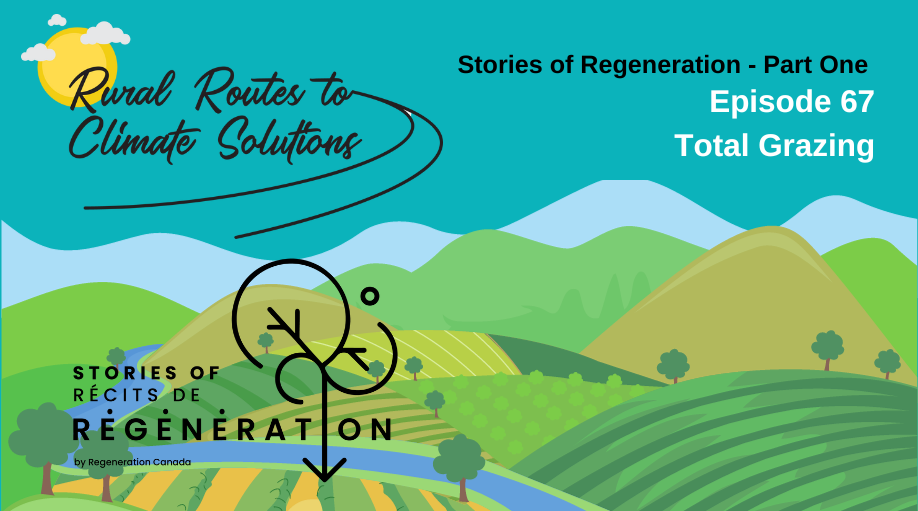
Podcast: Play in new window | Download
Subscribe: RSS
In the summer of 2023, a diverse group of storytellers, organizers, and strategists visited 10 farms and ranches in Canada. These farms and ranches were carefully chosen to represent different aspects of Canadian agriculture, including fruit, grains, beef, veggies, and even a vineyard. The purpose of this project, which included videos, articles, and a podcast series, was not solely focused on what these farms produced, but rather how they produced it. These farmers and ranchers were passionate about not only producing high-quality, nutrient-rich food, but also about fostering community connections, caring for the land, contributing to ecosystem stewardship, and addressing global issues like climate change. And to top it off, some of these farmers were even enjoying the process.
*BONUS* Bridging Echo Chambers Part Three
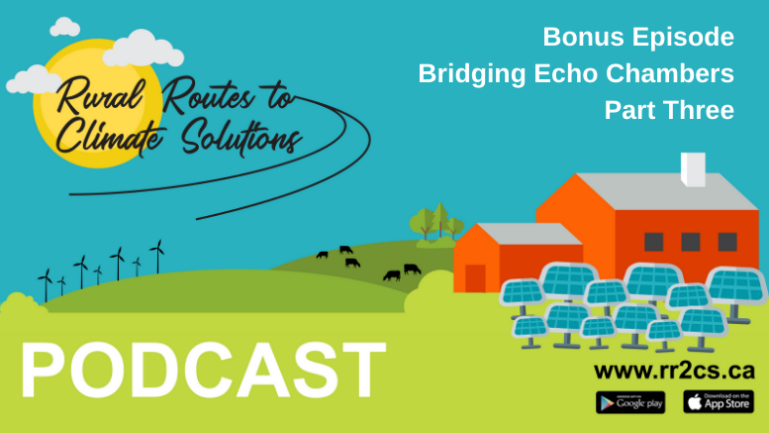
Podcast: Play in new window | Download
Subscribe: RSS
Feedlot manager Andrea Stroeve-Sawa shares low-stress livestock handling tips we can use to have constructive conversations on the livestock and the environment issue.
*BONUS* Bridging Echo Chambers Part Two
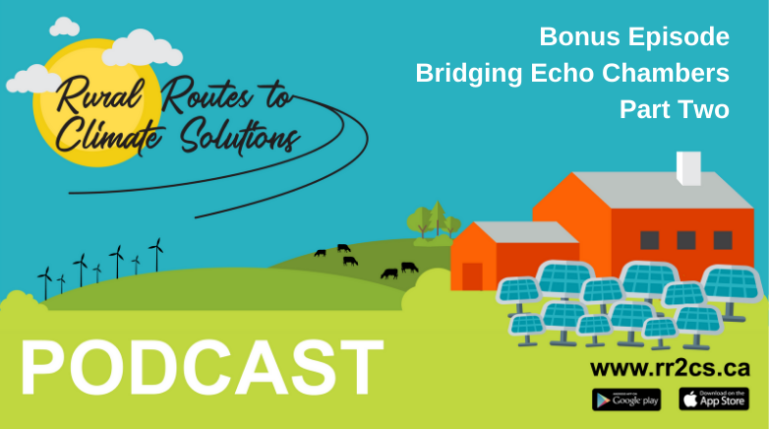
Podcast: Play in new window | Download
Subscribe: RSS
Communications strategist Sarah Wray discusses communications techniques we can use to have constructive conversations on the livestock and the environment issue.
*BONUS* Bridging Echo Chambers Part One
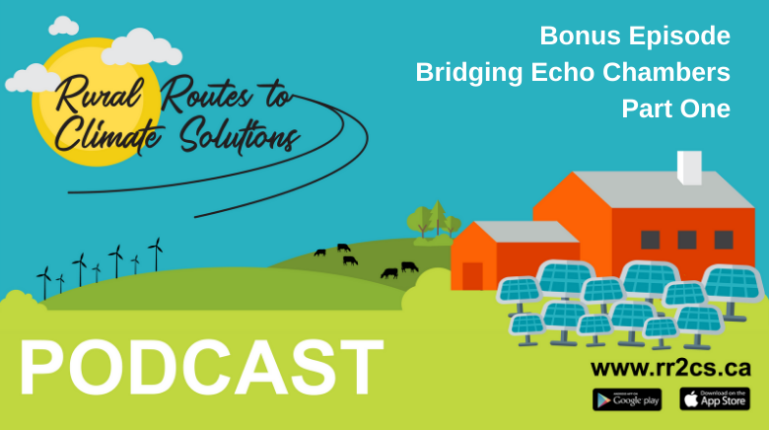
Podcast: Play in new window | Download
Subscribe: RSS
Author and leadership advisor David Irvine discusses the strategies we can use to have constructive conversations on the livestock and the environment issue.
Small Berry with a Big Story – Rosy Farms – Sturgeon County
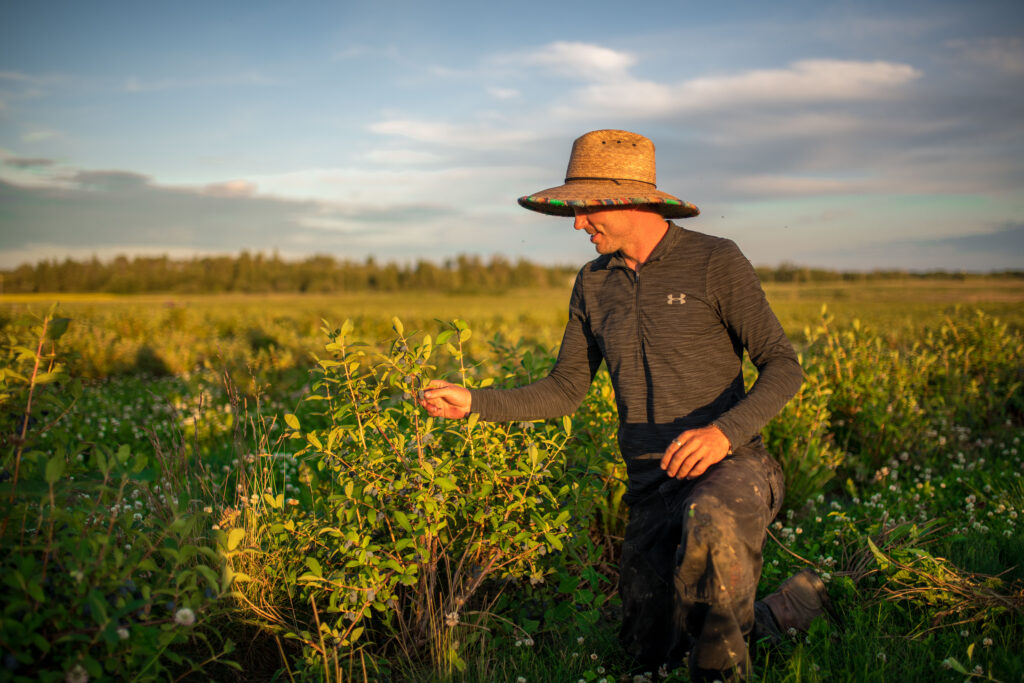
Andrew works with natural ecosystem succession: planting berry bushes on broken, exposed soils and making room for pioneer species – like dandelions, for example – and grasses and shrubs. He points out how “weeds” actually have tremendous value in helping to aerate soils, provide shade for other plants, and stimulate microbiology in the soil. Andrew purposely sowed bunch grasses – a grass that would be in the same phase as the haskaps – as opposed to a creeping grass, like a brown grass, or quack grass.
Building Soil, Healthy Ecosystems & Community – Tin Forest Farm – Wetaskiwin, AB
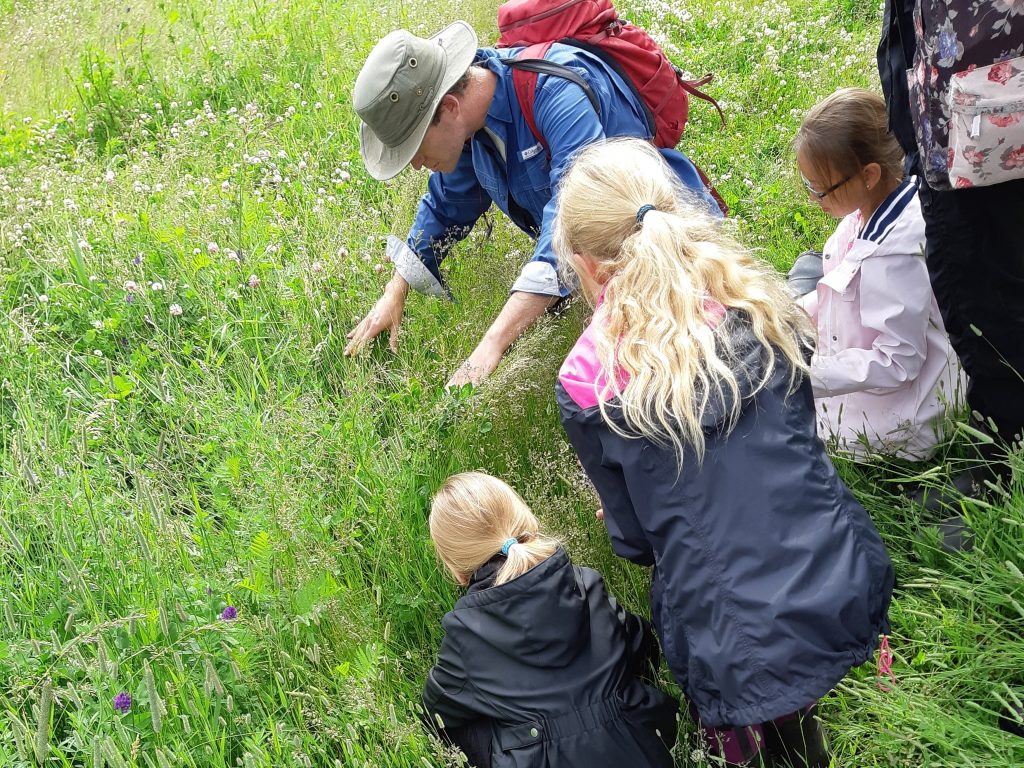
In their first year on the land, the Schambers planted 500 trees. The following year, they planted 3000. Today, they have over 8000 trees on their property. “The land was what fit our budget – it wasn’t the land of our dreams,” reiterates Alana. “But we’ve been working with the land to clean up the junk, reorganize, plant trees, encourage plant growth and make it the farm of our dreams.”
Over the past decade, the Schambers have helped to restore and rehabilitate Tin Forest Farm through regenerative farming practices, including rotational grazing, agroforestry, and fencing off sensitive riparian areas. The family raise grass-finished heritage beef and lamb, heritage chickens, honey bees, and sell hand-spun wool. In previous years, Alana organized an annual summer Kid’s Nature Camp and a Farm to Table community dinner at the farm. “Our goal is to get local food on the tables of local families,” says Alana.
Heritage Sheep Farming and Silvo-Pasture Management – Rhyant Rock Farm – Stony Plain, AB
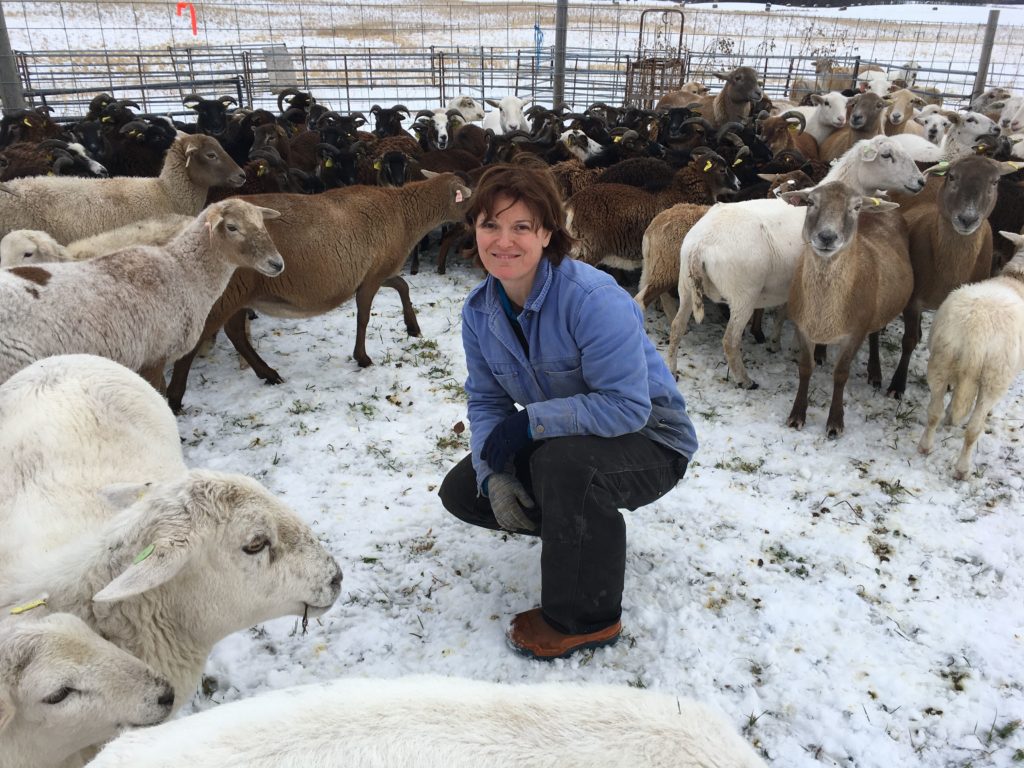
When I began to consider the risks for disease – which is very real in this day and age, look at COVID-19 for example – I became really interested in learning more about heritage breeds. There’s certain breeds that are more disease, or parasite resistant. There’s also mothering instincts and attributes of food quality. When you consider evolution, some breeds go extinct. But sometimes they lose popularity because they are smaller, or slower at production. I think as human beings we’ve gotten caught up with breeds that grow the fastest versus those that are of better food quality.
For me, I work off-farm, so I can’t be here 24/7 to lamb sheep, or getting up in the middle of the night and then going to my day-job and performing well. It was important to me to find breeds – American Soay and Katahdin sheep – that are able to look after themselves in the hours when I’m not here. With these breeds, lambing entails going out in the morning and evening and putting tags in the lambs’ ears. It doesn’t involve pulling lambs. It doesn’t involve 2 AM checks or anything like that.
